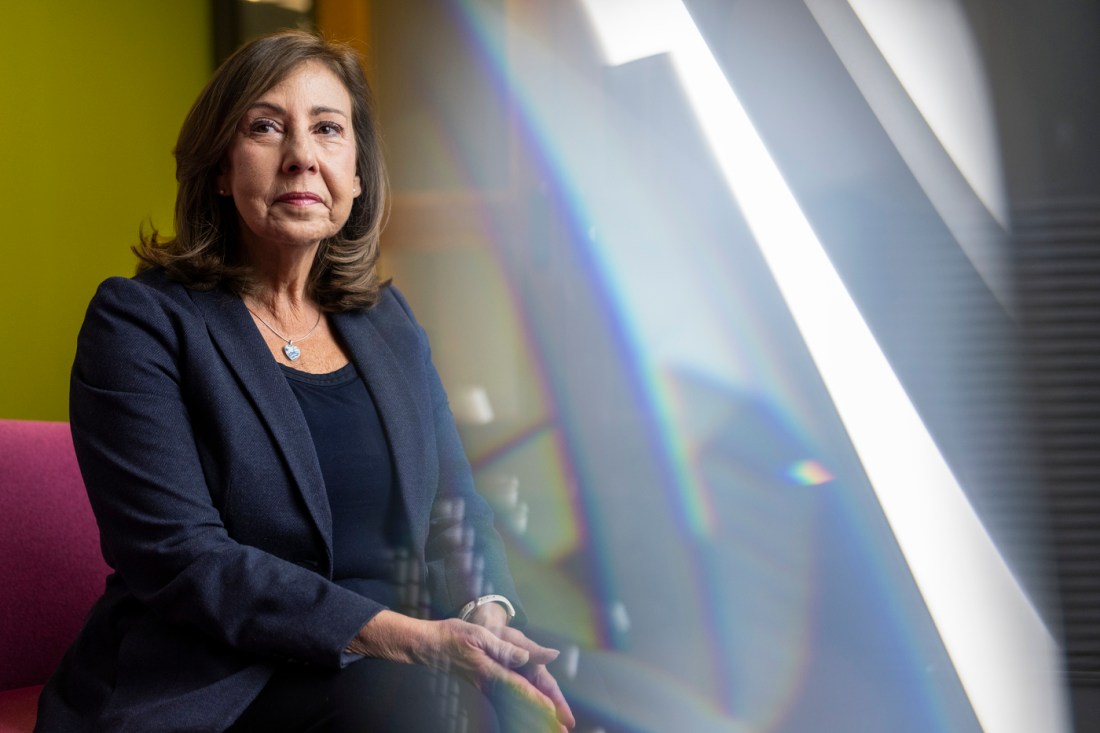What is eldest daughter syndrome?
Is it a real condition?
Eldest daughter syndrome describes the responsibility eldest daughters are often given in a family and how that shapes them. But this Northeastern professor says birth order and gender aren’t “a horoscope.”

Who plans the agenda for vacations in your family? Who’s the first to step up to care for mom and dad or grandma and grandpa? Who’s the one organizing family holidays? Chances are if you have an older sister, it’s her. And if she’s the only one in your family doing this, she may have “eldest daughter syndrome.”
In a viral video on TikTok, licensed family and marriage therapist Kati Morton broke down the eight “symptoms” of “eldest daughter syndrome.” They include feeling an intense sense of responsibility for others, having an inclination toward overachieving, struggles with anxiety, people-pleasing, and placing boundaries, feelings of guilt, having a difficult time with adult relationships and having feelings of resentment toward your siblings and parents.
Eldest daughter syndrome is not a real diagnosable condition, says Laurie Kramer, a professor of applied psychology at Northeastern University. Nor does one’s birth order and gender mean they will automatically have certain traits or roles within the family. But Kramer, whose research focuses on sibling relationships, said that many eldest daughters do end up taking on duties without recognition due to societal norms.

“(Eldest daughter syndrome) does feel real and for good reason,” Kramer said. “When I hear eldest daughter syndrome, I’m thinking about families where we have just been unintentionally putting burdens on particular individuals. This happens across the world, but we haven’t really been paying attention to the cost of that. When a sibling provides a lot of caregiving to other siblings or parents, it comes at a cost.”
Featured Posts
Kramer said research shows that first born/older girls are often asked to take on a caretaking role with their younger siblings, sometimes as young as 5 years old. In doing so, it creates a family dynamic where the older girls are socialized to take on more responsibilities and learn to be more conscientious of others’ needs, Kramer said.
Putting responsibility on the oldest daughter is a common dynamic that often continues as the children become adults and end up caring for elderly parents, Kramer added. It can end up creating resentment not just between parent and children, but between siblings as well. For many eldest daughters, this ends up shaping their personality and relationships outside the family.
Eldest sons aren’t exempt from also taking on more responsibility within the family, Kramer said. But often they’re expected to take on financial responsibilities instead of responsibilities around the house or involving caregiving. The former tends to get more recognition while housework and caregiving tend to be more overlooked, she said.
“For example, when there’s a family business, those sorts of things have traditionally been handed down to eldest sons,” Kramer said. “Eldest daughters in some families are expected to be the ones to bring people together, to be that emotional source of support and … we don’t tend to explicitly value a lot of what they’re doing. It’s invisible.”
But this type of dynamic between an older sister and her siblings and parents is not a given. Kramer said other factors play a role in establishing a family dynamic. These include the age gap between siblings, how well the siblings get along with each other and how they treat each other, and whether there’s a family member with a medical condition that requires them to receive more attention.
When I hear eldest daughter syndrome, I’m thinking about families where we have just been unintentionally putting burdens on particular individuals.
Laurie Kramer, professor of applied psychology at Northeastern
“It’s really important that we not look at this as a horoscope,” Kramer said. “Families are really, really different and sometimes parents are very well aware of the impact of assigning roles like that to their children. … What’s deeper is really looking at the roles of individuals and siblings within the family and understanding we can’t just assign a role to someone based simply on birth order.”
This type of awareness can help parents avoid falling into the eldest daughter trap when raising their own family. Kramer said parents looking to avoid placing too much burden on their eldest daughter should embrace balance and create an environment where children can speak openly if they feel something is unfair.
“We are not destined to play these roles in our lives,” Kramer said. “We have choice and that’s one of the reasons why I stay away from emphasizing the importance of birth order and gender. There is nothing we can do about those sorts of things. … But (parents) have choices every single day when parenting their kids.”











